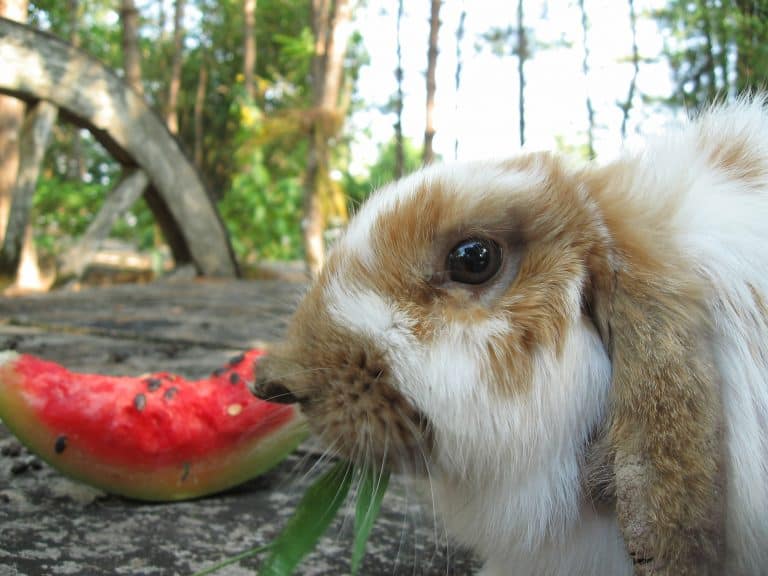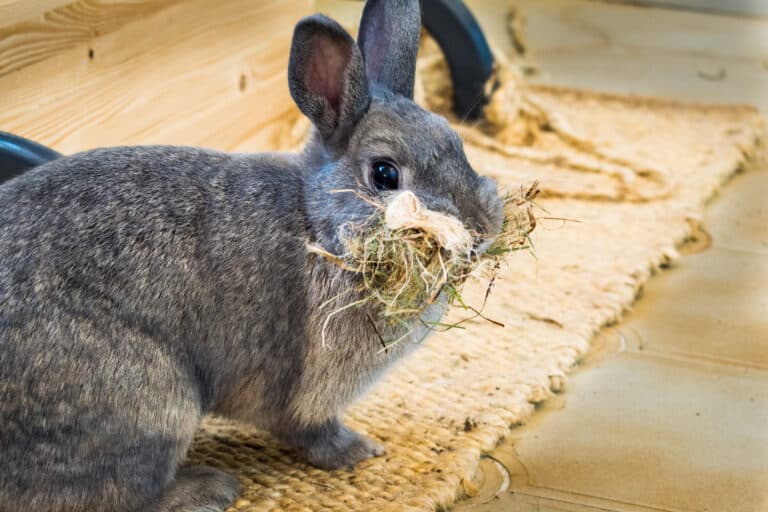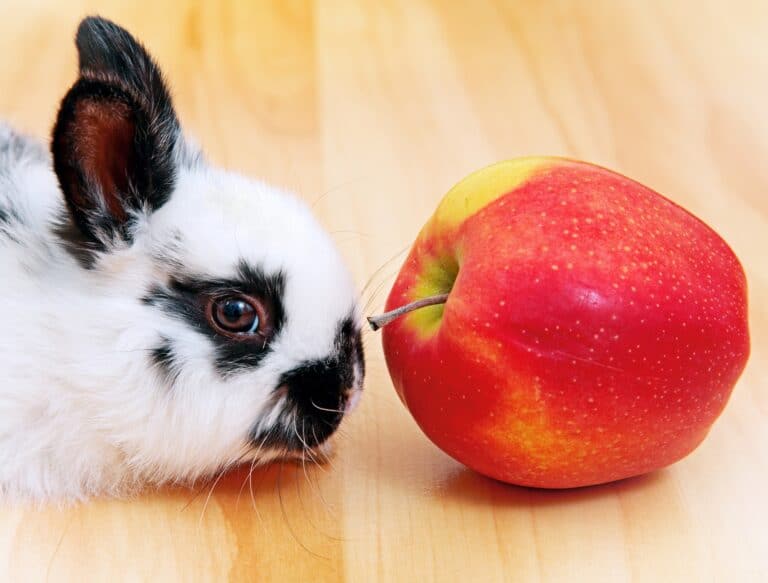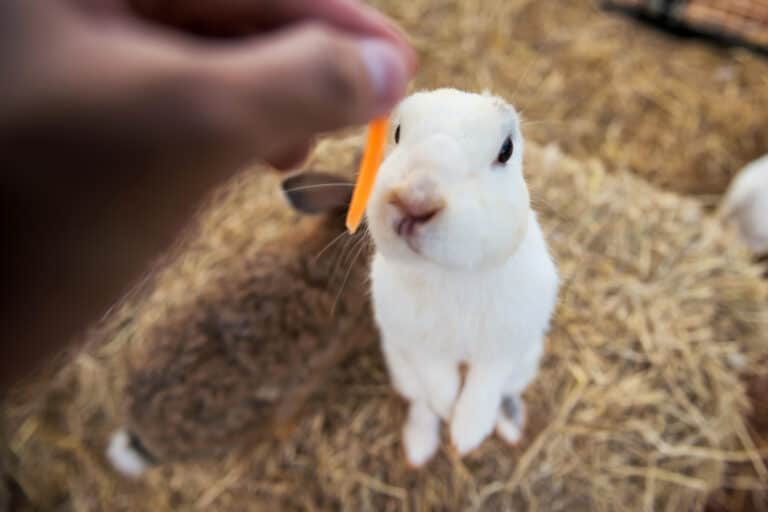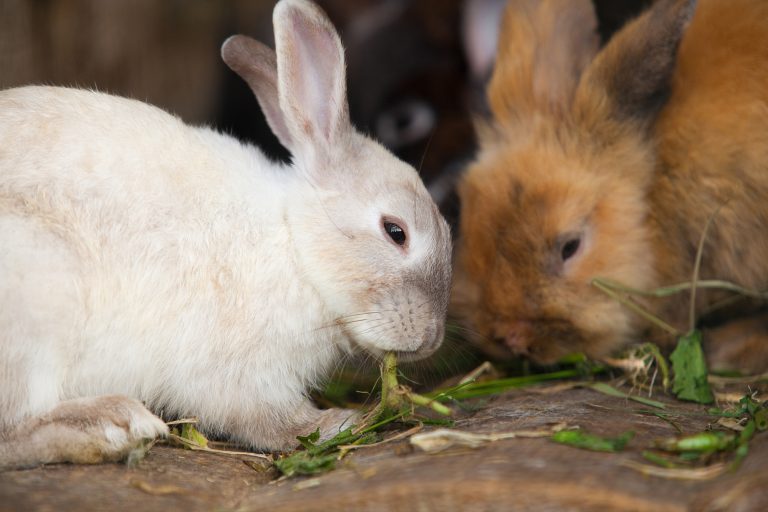What Can You Feed Wild Rabbits: A Comprehensive Guide
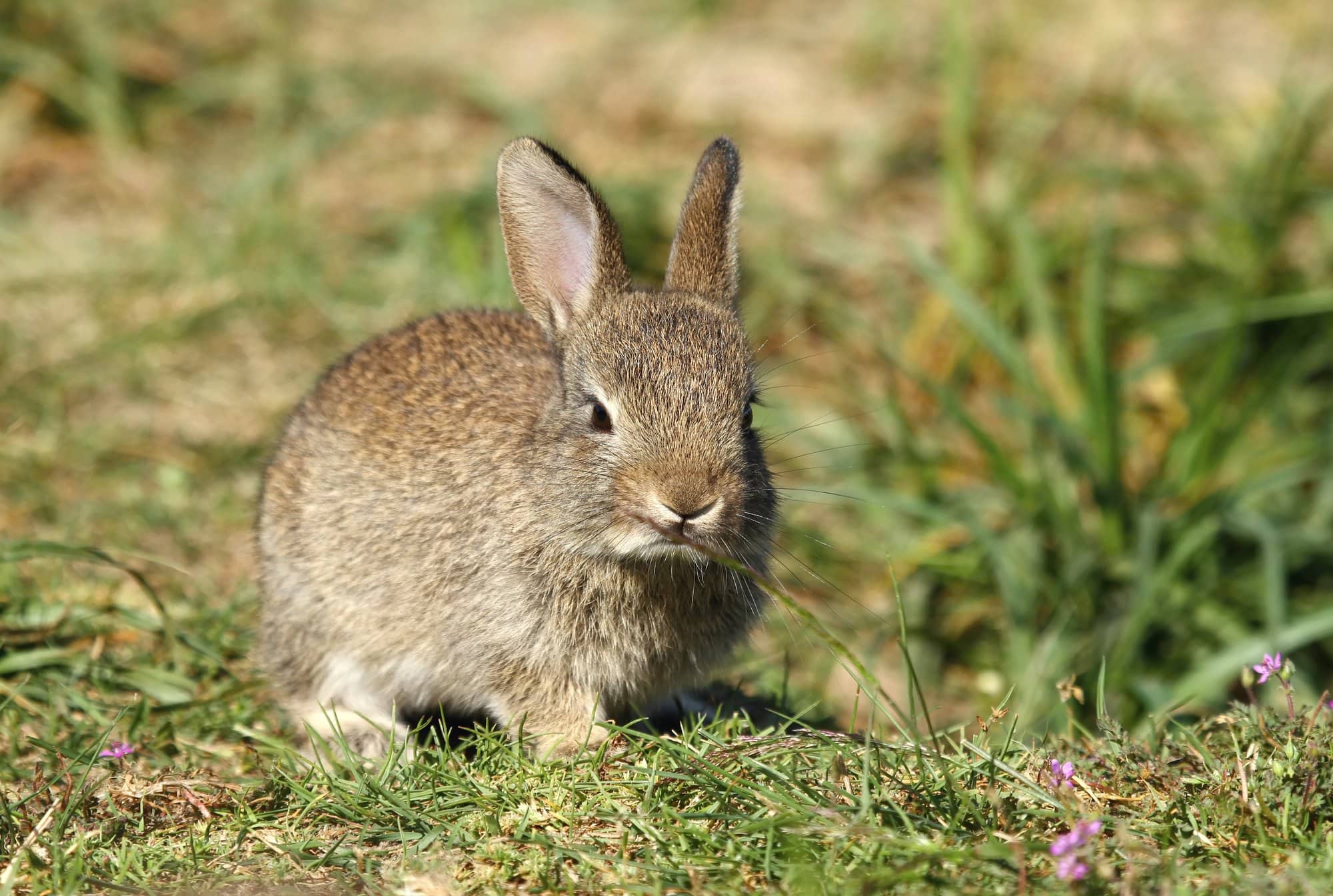
Do you live in an area bustling with wild rabbits? If you do, the temptation to feed your furry neighbors might be too great to resist, especially when winter hits, and food is scarce. But what can you feed wild rabbits? Knowing what wild rabbits eat helps ensure you dish out nature-approved meals.
What Can You Feed Wild Rabbits: Key Take-Aways
Like pet rabbits, wild rabbits are herbivores. This means they thrive on a diet of plant material coupled with fresh water. Think grasses, tree bark, herbs, weeds, fruits, and fresh vegetables.
However, a wild bunnies natural habitat doesn’t always mean they have ready access to a large quantities of food items in their plant-based diet. A balanced diet of hay, like alfalfa hay, Timothy hay, orchard grass or even oat hay are not usually an option for wild animals, let alone adding in rabbit pellets. A wild bunny takes what it can get. Consequently, the composition of their meals varies depending on the season, their habitat, and the different foods available in their neck of the woods.
During periods of food scarcity, giving these creatures a hand can go a long way in ensuring their survival. Therein lies the importance of knowing what they eat in their natural setting.
Do Wild Rabbits Eat Vegetables?
While their primary food source should be grass hay, a wild rabbit has a thing for fresh veggies, too, and they will eat different types of vegetables if they are available.
The good news is that veggies are great for buns, wild or domestic rabbits. These plant-based foods provide essential nutrients, fiber, and hydration that are a good choice for supporting an adult rabbits overall health and well-being. Plus it helps keep their digestive tract working as it should.
You can give wild rabbits the following vegetables and fresh leafy greens:
- Basil
- Beet greens
- Bok Choy
- Broccoli (stem and leaves)
- Brussel sprouts
- Carrot tops
- Celery leaves
- Cilantro
- Collard greens
- Dandelion greens
- Dill
- Lettuce (Romain or red and green leaf)
- Mint
- Mustard greens
- Parsley
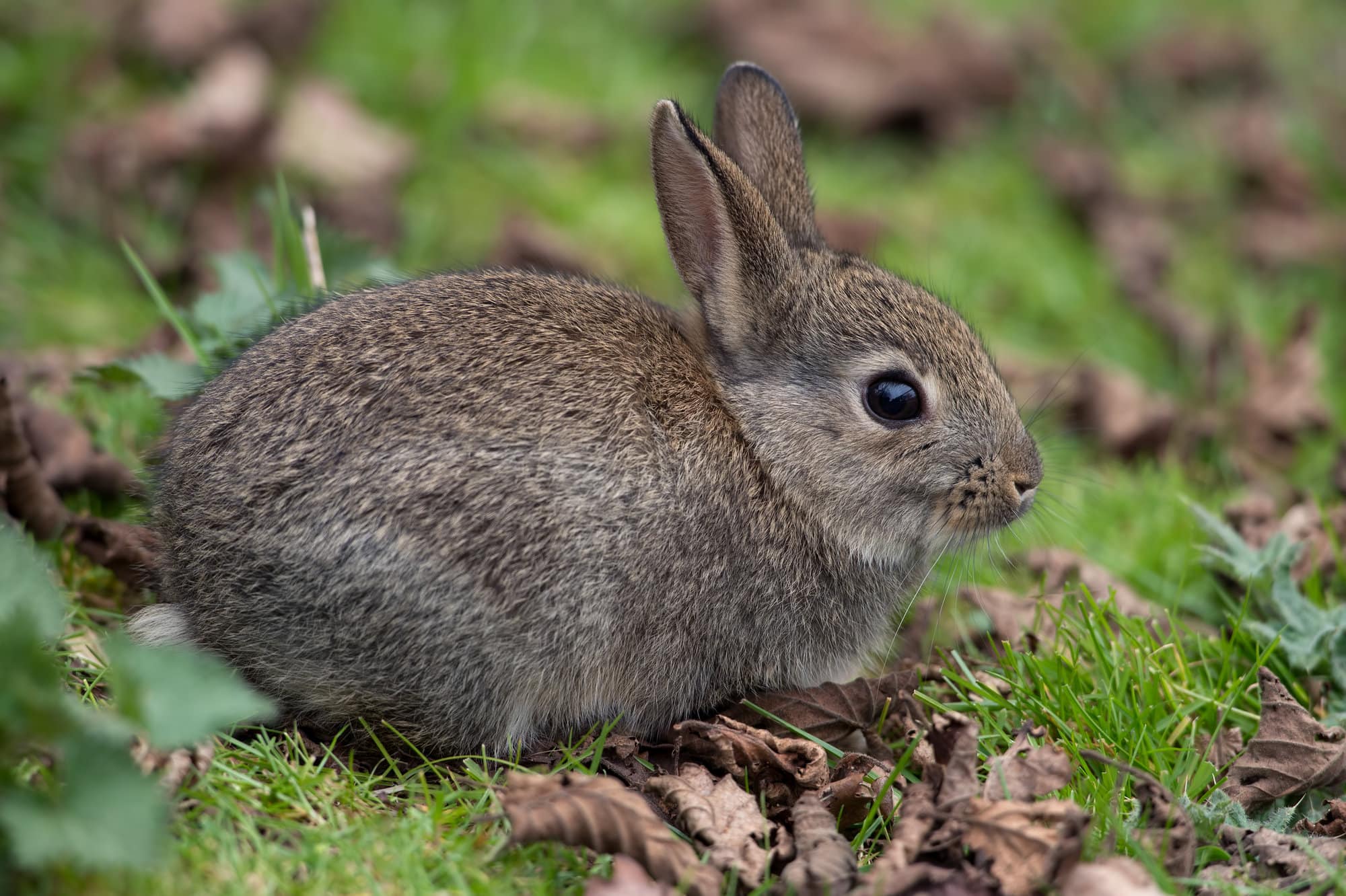
Do Wild Rabbits Eat Fruits?
Wild rabbits will eat almost anything, so yes, they’ll chow down on fruits if the sweet, tasty stuff is around. As it could easily become one of their favorite foods, think of fruits as more of a treat than the main course. They’re great as an occasional treat and adding variety to their meals rather than their primary food source.
Most fruits have a high sugar content that could cause issues with a rabbit’s digestive system. So offer these sweet and yummy treats in moderation.
Wild rabbits will enjoy the following fresh fruits:
- Different types of berries, such as strawberries, raspberries, blueberries, and blackberries
- Bananas
- Mangoes
- Watermelons
- Grapes
What Do Wild Rabbits Eat During the Winter Months?
Wild rabbits can face tough times when the winter season rolls along. During the colder months, many wild vegetables die or get covered with snow, making it hard for rabbits to find anything other than small quantities of rabbit-safe food. With fewer plants around, they have to work extra hard to find enough food, so sometimes, they resort to less tasty options.
During the winter, a wild rabbit’s diet becomes so limited as there’s not as much fruit and green plants available and, in order to survive, they’ll usually munch on the following when there’s nothing better to eat:
- Woody plants: When grasses and other herbaceous plants are scarce, wild rabbits will usually consume the bark, twigs, pine needles, and buds of various woody plants or young trees. This includes shrubs, trees, and bushes.
- Dried vegetation: Wild buns may forage for leftover dried grasses, weeds, and other plants they can find. This is especially true in areas that don’t get much snowfall.
- Fresh greens: If they’re lucky, wild rabbits might still find a few winter-hardy vegetable plants with fresh leaves growing in their area. Regions of the country with milder climates often have plant varieties that grow throughout the year.
- Seeds: Those that fall from trees or plants, like sunflower seeds, are also on the menu for wild rabbits during the chilly months.
- Agricultural crops: In certain areas, wild rabbits might venture into fields and orchards to feed on the remnants of crops that have been left behind or are still accessible.
When Do Wild Rabbits Eat?
Wild rabbits have a routine that’s tied to the natural light cycle. They’re crepuscular, meaning they’re usually most active during the hours right after sunrise and just before sunset. As a general rule, you can expect them to be out and about foraging for food just after dawn and then again in the late afternoon hours just before dusk.
They’re not big fans of the scorching midday sun, and they can’t see very well in the dark, so you’re less likely to see them eating when that blazing ball is high in the sky. Neither do they forage in the dead of night as nocturnal animals do.
How Much Should Wild Rabbits Eat?
Studies on the wild rabbit diet for adults rabbits show much the same dietary needs for both domestic and wild rabbits. They both consume approximately the same amount of food. How much depends on their weight, which is 2/3 to 1 1/2 cups for a 2 pound rabbit.
For example, adult wild bunnies that weigh between 2 and 3 pounds will eat roughly 1 cup of food on a daily basis. But they will need a bit more if they’re still growing or expecting baby bunnies. In the same regard, larger rabbits like cottontail rabbits or a jack rabbit will eat considerably more since they can top the scales at 6-10 pounds.
Considering that a modest-sized strawberry could be anywhere from 1/8 – 1/4 of a cup, depending on the species of wild rabbits, they don’t need much food to get by.

What Do Baby Wild Rabbits Eat?
Whether wild or domesticated, baby rabbits start life drinking milk, their mother’s milk, to be exact, until they’re roughly 3 weeks old. Newborn rabbits get all the nutritional value they need from the mother rabbit. By week 3 or 4, wild baby rabbits level up their eating game as they shift towards a herbivorous diet. They still rely on their mother’s milk but will consume grasses, tender greens, and some vegetables.
They’re often fully weaned by the 5th week and young rabbits can then eat a variety of small pieces of leafy greens, grasses, and small amounts of vegetables. Take note, however, that wild baby bunnies have diverse diets depending on where they live and what food is around.
Some mother buns leave their babies before the wee ones can fend for themselves. In other instances, the mother dies.
If you think you’ve found an orphaned wild baby rabbit, connecting with local wildlife experts is the way to go. Trying to DIY rabbit parenting can sometimes backfire, causing harm to the babies.
Is It Okay to Feed Wild Rabbits?
Feeding wild rabbits can be a mixed bag with positive and negative consequences. On the one hand, providing sustenance to undomesticated buns when food is scarce helps increase their chances of survival. It also lets you observe them up close and learn from their behavior.
However, presenting a spread of goodies can attract other animals (even predators). Moreover, gathering wild animals around a feeding spot might lead to the spread of diseases.
Best Way to Feed a Wild Rabbit
Leaving out food for wild buns during the winter won’t do lasting harm. Still, it would be best not to make it a habit, as it could lead to negative consequences.
The ideal way and best thing to do to help undomesticated rabbits when food is scarce is by growing plants that will keep them fed when winter comes along. This gives wild buns more natural resources to turn to when their usual food sources have dried up or are covered with snow. It’s also less likely to attract creatures that prey on rabbits, such as foxes or raccoons, who don’t rely on plants as a major source of food.
Check out these posts for more information on vegetables and fruits to plant that will attract and feed rabbits when the cooler weather arrives.
Planting a Garden for Wild Rabbits
Vegetables such as carrots and lettuce can feed buns during the winter. You can also create a garden with herbs that rabbits love, such as mint, parsley, and basil. Let fresh grass and wildflowers grow instead of pulling them out. Dandelions are good for rabbits and will provide added nutrition to these furry creatures.
Make sure you don’t use pesticides that contain chemicals toxic to rabbits. Instead, rely on organic products to turn your garden into a haven for wild buns.
During periods of food scarcity, giving these furry creatures a hand can go a long way in ensuring their survival. Knowing what wild rabbits eat is essential so you can provide for them when the snow flurries start to fall or when activities in the surrounding area limit the available food.
You don’t have to set out food for them outright to help. Planting leafy greens and veggies that thrive in different seasons is a better alternative. Doing so gives wild buns more food sources in a way that aligns with their instinctual foraging behavior.
More on Rabbit Diet
- Is Orchard Hay Good for Rabbits?
- The Best Lettuce for Rabbits: What Type Can They Eat
- Complete Guide to the Best Hay For Rabbits: Reviews & More
- What Can You Feed Wild Rabbits: A Comprehensive Guide
- Can Rabbits Have Cabbage? What You Need to Know!
We hope you enjoyed this post! If you did, will you give it a share or two 🙂 Thank you! ~from Every Bunny Welcome


